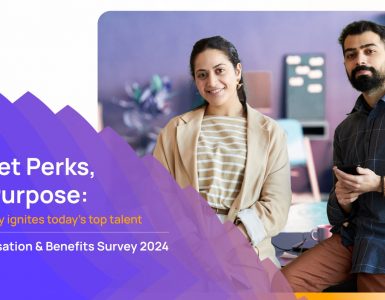The impact of the COVID-19 pandemic and the Great Resignation offered a new perspective on what the modern employee values most when it comes to their job. From pay equity and clear career development paths to hybrid work models and work-life balance, organizations need to adapt to these progressive needs in order to achieve success. Another crucial aspect in this mix is diversity and inclusion (D&I), which quickly emerged as a priority for top talent, and one not many are willing to compromise on. So much so that research has found that 76% of job seekers consider it an important factor in evaluating job offers, and 32% of employees are less likely to consider working at companies without D&I policies.
Introduced in the mid-60s, D&I is not a new concept but is still a major factor that organizations lack. According to a study, 78% of the employers believe that their organization is inclusive, only 32% of the employees think the same. A primary cause for this gap may be organizations misinterpreting diversity as inclusion. Because even though D&I are interconnected, they are not interchangeable. Misunderstandings here can be costly, and leaders ought to be clear about the distinctions.
What is diversity and inclusion?
Diversity is when an organization’s workforce includes people from different groups and ethnicities. Inclusion is how well an organization values the efforts, contributions, thoughts, and ideas of its diverse workforce. If an organization has a diverse workforce but only certain groups’ perspectives are valued or have authority, then the workforce is diverse but not inclusive.
One of the major reasons why organizations need to focus on D&I is because it is a key employee attraction differentiator and its value in talent retention is undeniable. Besides that, organizations stand to reap many other benefits such as improved performance, enhanced brand image, and increased cash flow and revenue. Thankfully, embracing D&I isn’t a herculean task as it once was, with digitalization has paving the way forward. Now, companies need only adopt the right recruiting strategies and drive policy reform to create a diverse and inclusive workforce. For more insight into these strategies, read on.
Reflect D&I in organizational culture by making it a top-down priority
Hiring candidates from different walks of life and nationalities isn’t the be-all and end-all of creating a diverse and inclusive workplace. Companies have to make D&I a part of their workplace culture and this effort starts at the top. Inclusion-first policies must be put into place and practiced, while also enabling diversity in leadership.
In fact, a lack of diversity in leadership roles can create challenges for the organization in terms of client expectation, employee satisfaction, and innovation. According to a study, gender and cultural or ethnic diversity in the executive roles of an organization were 21% and 33% more likely to outperform in profitability.
Organizations must also ensure that the entire workforce understands and supports the purpose and values of the company. This can start with training and campaigns that help educate leaders about D&I, and how to foster it into the organizational culture. When done right, this shines through during the early interactions, be it the interview or onboarding. Inclusion training can help employees be more aware of unconscious bias and other barriers that can inhibit D&I from setting in. It can also help them recognize these barriers and take the necessary steps to eliminate them.
Keep job descriptions free of biased and exclusive language
Job descriptions are usually the first point of contact, and like with any first impression, companies must get it right. If the language in these postings is outdated and exclusive, it deters candidates. This then compounds the problem as it can become much harder to build a diverse workforce.
According to study, women are less likely to apply for a job if the posting consists of male-centered words. This is because it implies that the organization has a male-dominated workforce and women may not feel that they belong. This inadvertently stifles efforts to have gender diversity and inclusivity right from the get-go.
To eliminate this, organizations should ensure that all job descriptions are properly vetted for language and tone. Going one step further, check for bias or exclusion towards one group and be proactive about inclusion. Organizations should also remember that bias in job postings is not always in the form of gender exclusion but may also exclude age, culture, ethnicity, and more.
Leverage sourcing platforms and channels that lend themselves to D&I
Apart from job descriptions, talent sourcing channels platforms are just as important in ensuring a diverse pool walks through the door. This is particularly key now, amid the talent crunch, as visibility in the diverse talent pools can give organizations a competitive advantage.
Among the strategic routes to consider is to leverage referral programs. Existing employees should be encouraged to refer candidates to help create a diverse talent pool. This is backed by the fact that professionals are more likely to refer candidates who have similar backgrounds to their own. While this has the potential to cause an imbalance, this is where upper management can step in and ensure that D&I objectives aren’t muddled. While often the simplest route, referral programs should be leveraged carefully and are more likely to work well when the existing workforce celebrates D&I at every turn.
Employ a perk package in tune with variegated needs
Non-monetary benefits are still among the key factors that employees look for in an organization. Given the current environment and nature of the digital workforce, the one-size-for-all model simply does not work. It is important for organizations to offer a tailored perk package, one that caters to the evolving needs of a diverse workforce. This inches into inclusion territory and is a tell-tale sign of how much a company cares about D&I as a whole.
Here, optimizations can help organizations effectively target an underrepresented and untapped talent pool. By offering a customized package, these professionals feel heard, understood and are more likely to engage. Apart from diversity, tailored perk packages can instill a sense of pride in the workforce, as it suggests that they are part of an inclusive work culture.
While it can be challenging to create a package that caters to every individual, organizations can start off by supporting people from different cultural and regional backgrounds. An example of this can be floating holidays, where employees can use the holidays as they deem fit instead of mandatory leaves during a certain time. This helps employees celebrate and honor their culture or religion, while also celebrating the freedom granted to them by their organization.
Bridge the gap between the employee’s and organization’s perception of D&I
While employers feel that the organization celebrates D&I, employees disagreed by a noticeable margin. One of the ways to eliminate this gap is by actively taking steps to ensure that organizational values are represented widely throughout the workforce. This can help make employees aware of the efforts made by the organization to bring about D&I. Subsequently, organizations can also ask for employee feedback on areas that are lacking and need to be worked on. Re-evaluating company policies also helps organizations track the progress of their efforts to institute D&I.
Actioning change based on feedback sent by employees provides the opportunity for an organization to show its commitment. It also helps ensure that employees from all groups are heard and that their opinions are valued. This organically promotes D&I in the organization and delivers results. Apart from this, organizations should clearly define the accepted practices to help foster an inclusive and diverse environment.
The positive impact of having a diverse and inclusive workforce is immense. According to a 2017 study, inclusive teams make better decisions twice as fast and in half the number of meetings 87% of the time. The decision and execution of diverse teams delivers better results too. It is important to remember such outcomes are only possible if diversity and inclusion go hand-in-hand. One way to ensure diversity in the talent pool is to partner with Talent500. We offer talent management solutions and help create diverse, global teams.
With automated recruitment tools, we tap into developer communities, peer networks and more to help companies reap the rewards of a diverse workforce. What’s more, with AI-powered insights, we can find the right fit for you and ensure engagement all through. To know more, request a consultation to build diverse teams that deliver.






Add comment